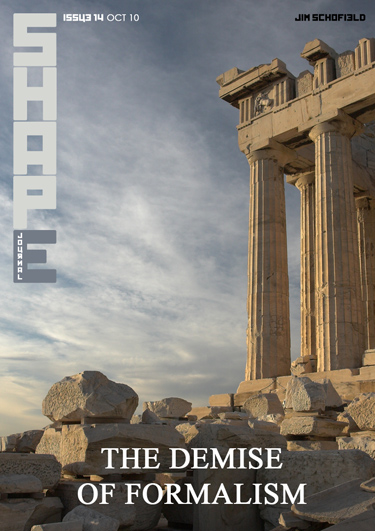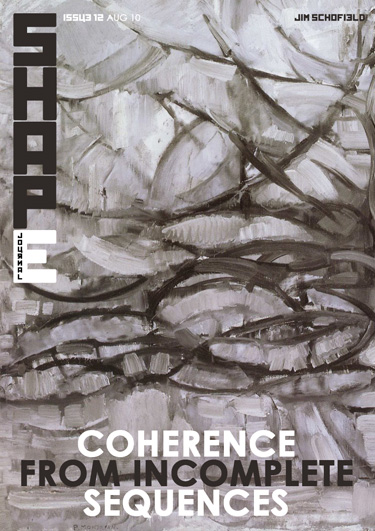Four philosophers Tom, Dick, Harry & Bill are in their cups, but instead of going out and painting the town red, they gather closer together in the quietest corner of the pub, and argue about their shared conundrum – What is Holism?
How do they deal coherently with such a self-modifying Reality?
These four contributions are in the order in which they were delivered, each correcting or extending its predecessor, or drawing in evidence or metaphors from their own experiences of Reality. What do YOU think of their conclusions?
1. TOM: The Ascent of Predictive Processes
Our highly commendable efforts to understand Reality nevertheless bear the stamp of our own current stage of development. To jump straight to a full and coherent conception of Everything was, and still is, totally impossible, and, in addition, each stage in the process will be unavoidably limited by our own current capabilities, knowledge and understanding. Indeed, whatever we extract will never be incremental steps in a direct upwards ascent.
All gains will be conditional, simplified, and even rationalised, in our attempt to reveal what we see as the essential driving elements our “conceived of” clearly meaningful World.
And this conditional process is always more of a large-swing zigzag than a ladder, and our greatest difficulties are often involved in shedding our most dearly-held assumptions and principles, which have indubitably been the foundations of our previous gains, rather than the inherent problems of the actual nature of Reality itself.
Nevertheless, progress is definitely made – NOT by descrete morsels of Absolute Truth, but on the contrary, by a series of constructs (didactic models), which contain objective content.
Now the meaning of this described process of development becomes crucial!
Objective Content is NOT the Truth, but it embodies aspects or views of parts of the Truth, in given circumstances, and it is useable! That made each of these, and still does, a considerable gain. But it doesn’t, of itself and necessarily, take us directly forwards towards a fuller understanding. And this is because its main purpose is often and primarily for Prediction.
To be in a position to accurately predict what will happen next, endows the successful predictor with considerable power. With such dependable predictions, plans can be made and instituted. Mankind can begin to control aspects of his World to his evident benefit!
But accurate prediction is not necessarily predicated on real understanding, but on the extraction of dependable Form or Patterns.
For, if such patterns could be reliably revealed, the future could be predicted by a simple forwards extension of the pattern.
The trouble was, and still is, that the World is not wholly or even separable deterministic – always following rigidly pre-ordained patterns to completely predictable outcomes.
Occasionally, such conditions can exist, but they are rarely dependable, and a good dollop of hope, ritual and “added magic” was always considered an essential ingredient in any attempts to predict such outcomes.
Yet such rituals and “added substances” could (though rarely) actually help, and well-defined processes, with “important” substances present were established and retained in that using group’s culture. It was still hocus-pocus, but it could, and sometimes did, contain a sliver of Objective Content, and, the process could be more successful than most such “magic”
The outcome of such methods was that Mankind began to identify necessary substances and even began to add features such as Fire or Water, and occasionally a well-defined, controlled and maintained process would actually begin to deliver the predicted results quite reliably.
The crucial feature in such processes was that a Part of Reality was isolated and maintained as such, and subjected to controlled processes within those steadfastly maintained conditions.
Mankind achieved a measure of predictive success by imposing Plurality upon a given situation.
What is meant here by Plurality is the conception that each and every Whole is composed of separable constituent Parts, and although this was only rarely true in unfettered Reality, it could be made to be the case in limited and controllable localities. Yet the requirements for such impositions upon sections of Reality were initially prodigious in the light of Man’s own current powers and knowledge.
To even start, such methods required a great deal of reliable knowledge, which itself was difficult to come by.
A chicken-and-Egg situation meant that early real gains were dead slow!
But, Mankind did, by partial truth upon partial truth, begin to gather more and more objective content, which in turn empowered him to successfully control situations to he required degree.
Ultimately, there was an ever widening area of situations in which he could impose a strict Plurality upon them, and hence, by holding most things constant and varying only a handful of factors were indeed in a position to both extract and predict!
This was successively refined into what came to be called scientific methodology, and fostered the great developments in the production of required implements, tools and weapons which became Technology.
But it was deterministic and mechanistic in the main, and was therefore NOT applicable in the bulk of questions which Mankind had to constantly address.
It became an aberrant (though very useful) growth in a particular direction, and engendered a general attitude to all endeavours, which was, all too often, entirely inappropriate!
But you can direct your own paths of development.
They may be inadequate, but if they do contain that vital objective content, then you must pursue them, though the more general outcomes will only be “as predicted” in very limited, mechanistic areas, and everywhere else they could produce, and often were, dire results.
2. DICK: How a Holistic World Suggested Plurality
Now in the previous contribution (The Ascent of Prediction), the development of Technology has been outlined, but such an approach to Reality is by no means the only one, or even the most important one, and the reason is that it is wholly predicated upon Plurality, and the World is simply NOT pluralistic.
Yet as with all such characterisations by Mankind, BOTH of our versions of the two categories Plurality and Holism are clearly mistaken oversimplifications, and in spite of their many strengths and successes, can, and in the end always do, mislead us to a remarkable extent.
For example Holism, in its crudest form, insists that absolutely everything affects everything else. All is subject to constant change – absolutely nothing is constant!
Now, if that were “all that there is to it” concerning Reality, we would not get very far it attempting to understand it.
Nothing would be extractable as separable and independent entities or relations, and every attempt at prediction based on some isolated segment of Reality would inevitably fail.
So, such a basic holistic approach inevitably disables our chances of getting to grips with Reality, and ever actually controlling it to direct it to required ends.
It that simplified form Holism becomes a merely passive philosophy, which observes Reality-as-is as it remorselessly pursues its own paths of interaction and change. We cannot intervene! We merely notice its cycles which are regularly repeated, and the trajectories of Life and Death, but we can only sit and contemplate. [Some wags actually say that such a position accurately defines all Philosophy, but that isn’t true!]
And, of course, that version of Holism doesn’t pertain anywhere: it is our own simplification of what does exist in unfettered Reality, but it is a fiction.
That basic view delivers such a complex, multiply-interacting mix, that the result is close to chaos, and totally random and unpredictable in particulars.
Evidently, such a definition is not only useless; it is significantly false as well.
For, in the midst of chaos, we do indeed have Order. Things may well be in constant change, but most such changes are NOT immediately significant, and the entire multiple and contrasting processes are not necessarily either equal in weight or entirely contending. For, if they were we would indeed have ONLY a totally random and chaotic World.
No forms would be evident, and everything would be the same everywhere.
Now, that is clearly NOT the case.
And the ground for the many subscribers to Plurality was that many, many things did indeed persist as the same Form for sometimes considerable periods. Indeed, the belief that all species were permanently constant and unchanging, and had been so ever since God had created them was almost universally believed. And even individual living things, once they had matured into adulthood, tended to remain in that state for long periods of time.
Without any doubt, our real, holistic World could, and did, beget episodes of Stability, wherein certain things persisted as constant – at least for a time.
Now, in all this there is an inherent contradiction!
Either there are NO purposive processes maintaining constant things, or there are ONLY such processes!
Stability implies the presence of such processes and seems to confirm Plurality, whereas constant change and quite evident dissolution and indeed Death, implies contending processes as in a holistic World.
The pluralists among us concentrate upon the essential laws, which “produce” everything in Reality and never themselves change.
While the holists concentrate upon an “infinite” number of contending processes, making nothing eternal and all involved in a constant process of change.
As inferred earlier, BOTH these are incorrect!
But just denouncing the contending alternatives has to be insufficient! We must characterise Reality as it actually is, and that must include both periods of Stability, and periods of dissolution and significant change. And, once again, these are not merely present together,
Indeed, they are interludes in an overall process of change.
There are dissolutory factors constantly attacking any stability, while there are also other factors which tend to erect stable situations, and the remarkable thing is that they “alternate” in dominance, and neither permanently dominate the world.
To make matters even more difficult for Mankind’s purpose of understanding these things, the situations do not just alternate like a permanent oscillation. Indeed, the overall process is one of discernable development – indeed, of Evolution.
Reality is NOT a fixed entity. It is regularly producing the entirely NEW, and creating new and higher stabilities, which themselves never permanently persist. But neither do they merely dissociate into “lesser” noise and chaos (as, it must be pointed out, it is inferred in the Second Law of Thermodynamics - a pluralist belief!), but resolves each cataclysm of dissociation into a new and higher stability.
For Mankind to cope with Reality-as-is, he must make the study of Emergent Change his most important task, for without it, he too will ricochet from one illusion to the next without really understanding what is happening.
3. HARRY: An Evolutionary Conception of Reality
Now, from the two contributions so far, it must be clear that, as usual, it is our conceptions of the inherent Nature of Reality which most often leads us astray. In addition, we have a very mistaken idea of what Truth is, and this has similar deleterious effects.
Reality is neither wholly determined by eternal laws, nor is it constantly deteriorating into ever more total chaos.
On the contrary, it regularly produces Stable Situations, which persist, but which also, in time, will just as inevitably destroy. Reality has a definite propensity for stability, but only produces stable situations which are inevitably undermined and superceded. And that process of Major Qualitative Change has dissolution at its very heart.
The myth of the Phoenix arising from the flames has a real basis in developing Reality!
The Possibility Space of Reality is regularly extended, yet none of these extensions are final and perfect. They can, and always will be, overturned by degeneration and replaced by the wholly new.
Those who support such a conception of Reality consider that the main study must be the trajectory of such changes, including the erection of the new stabilities, their undermining and dissolution, and the subsequent creation of an entirely new Level of stability ON TOP.
Now, this area is complicated not only by the richness of each new Level, but by the (perhaps) surprising continuance of the older Levels too.
The New Levels only replace the Old locally, and indeed, depend upon selected subsets of the older processes internally. So though locally the process is one of dissolution, replacement and selection, that is not the case outwith the aegis of the new Level – i.e. over the rest of Reality.
The various Levels co-exist, but are mutually affected to some degree!
Perhaps my favourite analogy of such a Universe-wide process is delivered by the atmosphere of the planet Jupiter.
Now, though extremely valuable, it is clear that the inclusion of the image of the atmosphere of Jupiter in the last contribution needs a further explanation, if it is to really deepen our idea of a holistic Universe and its inevitable trajectory of interludes of Stability and Change.
Look closely at this photograph of a section of the atmosphere of Jupiter.










 What is an Emergence? It is a special interlude of major qualitative change, in which a new level of reality is both generated and maintained. Such a Level is not a mere re-organisation, but involves wholly new entities, properties, relations and even Laws which did not exist previously. The template for such an Emergence has to be the Origin of Life on Earth. Only after the creation of the first living things did they inhabit a new Level of Reality, with its own laws. We call this collection of laws Biology, and institute a whole new science with its own scientists. But this, though without doubt the most important Emergence was certainly not the only one. Every science has had its own birth via an Emergence, and indeed from the Big Bang onwards all significant qualitative changes were created within Emergences, as have been all since that event.
What is an Emergence? It is a special interlude of major qualitative change, in which a new level of reality is both generated and maintained. Such a Level is not a mere re-organisation, but involves wholly new entities, properties, relations and even Laws which did not exist previously. The template for such an Emergence has to be the Origin of Life on Earth. Only after the creation of the first living things did they inhabit a new Level of Reality, with its own laws. We call this collection of laws Biology, and institute a whole new science with its own scientists. But this, though without doubt the most important Emergence was certainly not the only one. Every science has had its own birth via an Emergence, and indeed from the Big Bang onwards all significant qualitative changes were created within Emergences, as have been all since that event. Nice diagram from New Scientist, but I think it communicates more than the original authors intended. It demonstrates how the consensus in a particular research area is established and maintained. I'm currently writing a paper on this subject, and will post it as soon as it is ready...
Nice diagram from New Scientist, but I think it communicates more than the original authors intended. It demonstrates how the consensus in a particular research area is established and maintained. I'm currently writing a paper on this subject, and will post it as soon as it is ready...


